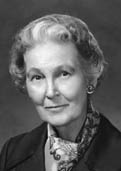May Owen facts for kids
Quick facts for kids
May Owen
|
|
|---|---|
 |
|
| Born | May 3, 1891 near Marlin in Falls County, Texas
|
| Died | April 12, 1988 (aged 96) |
| Nationality | American |
| Occupation | Physician, pathologist |
| Known for | discovering talcum powder used on surgical gloves caused infection and peritoneal scarring |
May Owen (born May 3, 1891 – died April 12, 1988) was an important doctor from Texas. She made a big discovery: the powder on surgical gloves could cause problems inside patients. This powder, called talcum powder, was causing infections and scars inside the body, especially on a lining called the peritoneum.
Dr. Owen was a trailblazer for women in medicine. She was the first woman to lead many important medical groups in Texas. These included the Texas Society of Pathologists (in 1945), the Tarrant County Medical Society (in 1947), and the Texas Medical Association (in 1960). She also helped fund medical education and received many awards, like being inducted into the Texas Women's Hall of Fame.
Contents
About May Owen's Life
Early Years and Education
May Owen was born on a farm near Marlin, Texas, on May 3, 1891. In 1912, she started studying at Texas Christian University. After graduating in 1917, she began working in a medical lab in Fort Worth, Texas.
She wanted to become a doctor, but many medical schools would not accept women at that time. Finally, she was accepted into the University of Louisville School of Medicine in Kentucky. The serious flu pandemic of 1918 made her want to study pathology. Pathology is the study of diseases and how they affect the body. She earned her medical degree in 1921.
After medical school, she observed autopsies at the famous Mayo Clinic in Minnesota. She even worked there for a year. Later, she studied anesthesiology, which is about giving medicine to make patients sleep during surgery. By 1927, she was back in Fort Worth and joined local and state medical groups.
Medical Career and Discoveries
In 1933, Dr. Owen worked as a pathologist at Bellevue Hospital Center in New York City. After a year, she returned to Fort Worth and became the chief pathologist at Terrell Laboratories.
In 1936, she made her most famous discovery. She found that the talcum powder used on surgical gloves was causing infections and scar tissue inside patients. This was a huge finding! It led to important changes in how surgeries were done. Because of this discovery, Texas Christian University gave her an honorary doctorate degree.
Dr. Owen continued to break barriers. In 1945, she became the first woman president of the Texas Society of Pathologists. Two years later, in 1947, she was elected the first woman president of the Tarrant County Medical Society.
In the early 1950s, she helped research diseases in animals, like a cattle illness and diabetes in sheep. Her work was recognized by the American Veterinary Medical Association. She also received awards for her research and exhibits on occupational medicine. In 1958, she was given the George T. Caldwell Award.
Later Achievements and Legacy
In 1960, May Owen made history again by becoming the first woman president of the Texas Medical Association (TMA). Nine years later, the TMA honored her with their Distinguished Service Award. She was only the fifth person and the first woman to receive this special award.
Dr. Owen was also passionate about educating others. In 1965, she helped organize a health fair to raise money for a health museum. This museum was later built and named the May Owen Hall of Medical Science in her honor.
She was very generous. In 1966, she donated $300,000 to create a scholarship fund for medical students through the TMA. When Texas Tech University's School of Medicine opened in 1972, she gave 20,000 books to its library. In 1974, she funded the first chair of pathology at the university, which was like creating a special teaching position.
In 1986, Dr. Owen was inducted into the Texas Women's Hall of Fame. She passed away on April 12, 1988, in Fort Worth, Texas, leaving behind an amazing legacy of medical discoveries and leadership.

